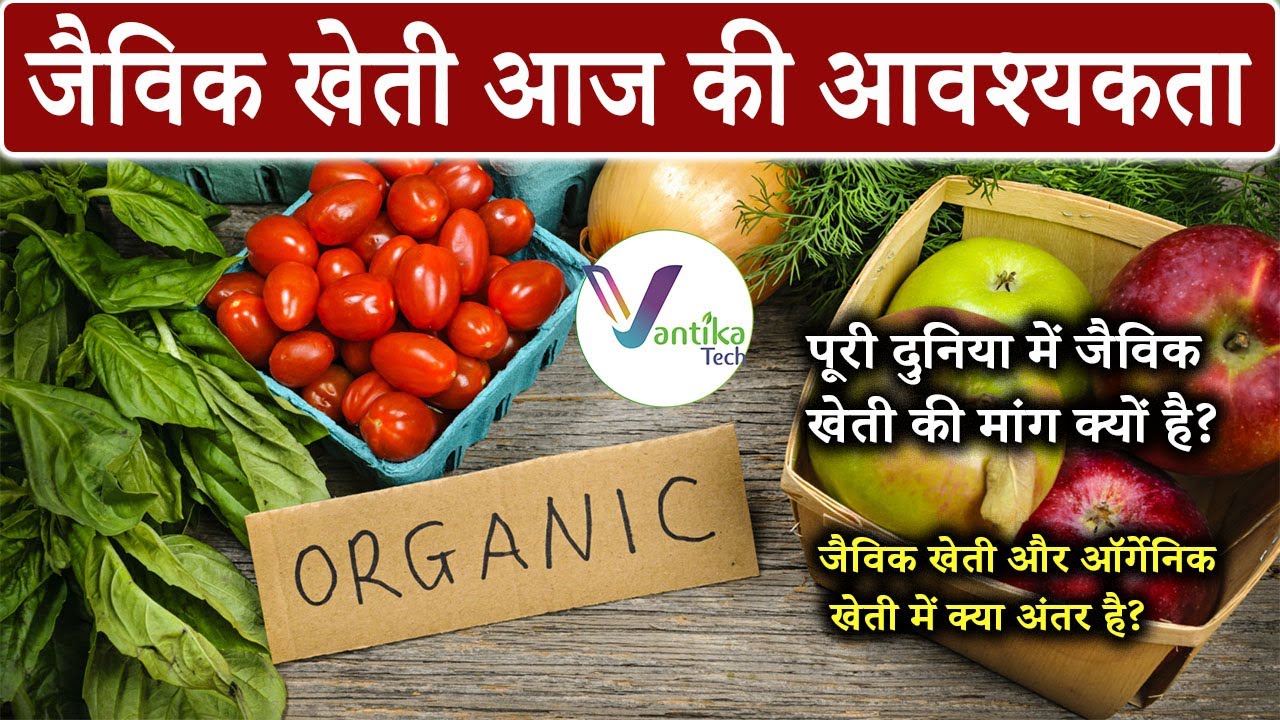Organic agriculture is a production farming system that maintains the health of soils, our ecosystems, and peoples. It also depends on ecological processes, biodiversity and cycles adapted to local conditions. Bio-fertilizers are natural fertilizers in which bacteria, microorganisms of algae, live as spores.
Fungi alone or their combination increase the availability of nutrients to plants. The role of bio-fertilizer in agriculture is of particular importance, especially in the context of the rising cost of chemical fertilizer at present and their hazardous effects on soil health.
Modern agriculture emphasizes the use of hybrid seeds and high yielding varieties responsible for large doses of chemical fertilizers and irrigation. Indiscriminate use of artificial fertilizers has led to some degree of pollution of soil and water drains.
Due to this, the soil's essential nutrients and organic matter are also being absorbed. Due to this there is a shortage of beneficial micro-organisms and due to which indirect population of the harmful insect is increasing in the soil and the problems of diseases in the crops are increasing day by day.
Chemical fertilizers have been used extensively since the Green Revolution, soils living in the soil ecology are rich in micro-flora and micro-organisms, enough to maintain soil fertility in soil health and provide some essential plant nutrients. Are responsible to the extent.
Biofertilizers are products with one or more species of microorganisms that are important for their use through biological processes, such as nitrogen fixation, phosphate solubility, fertilization of the atmosphere and other substances or biological degradation of cellulose, excretion of plant growth. Provide the ability to mobilize nutrients.
Biofertilizers have a special role in agriculture, especially considering the increase in the cost of chemical fertilizers and their hazardous effects on soil health, especially in the present context.
Bio Fertilizer: Current Time Requirement
At the present time, there is increasing concern about the dangers to the environment and sustainable agriculture. In view of the above facts, long term use of bio fertilizers proves to be economical, more efficient, productive and more environmentally friendly for marginal and small farmers than chemicals. Biofertilizer is a good choice for accessible fertilizers. Thus, the need for the use of biofertilizer arises mainly for two reasons. First, because increasing the use of fertilizers increases agricultural costs. Second, because of chemical fertilizer Use damages soil texture and gives rise to other environmental problems.
Classification of Bio-Fertilizers
Many microorganisms and their association with crop plants are being exploited in the production of biofertilizers. Biofertilizers can be grouped in different ways depending on their nature and function.
1. Rhizobium:
Rhizobium is a soil-dwelling bacterium that houses the roots of legume crops, such as pulses, and symbiotic stabilizes atmospheric nitrogen.
They are the most efficient biofertilizers according to nitrogen fixation levels. They have seven genera and are highly specialized for forming root glands in legumes, known as cross inoculation groups. Farmer brothers can use this to save 30-50 kg of nitrogen per hectare.
Rhizobium Species Crop
Ra. Melilotti Lucerne, Sweet Clover and Menthi
Ra. Triphali Barsim
Ra. Leguminosaram Peas and Lentils
Ra. Japonicum soybean
Rhizobium Cowpea, Moong, Urad and Gram
2. Azotobacter:
Among the many species of Azotobacter, A. Crococom predominates in arable soil and is found in artificial media (2-15 mg of nitrogen established / gram carbon source). These bacteria produce abundant sludge which helps in soil agglomeration. Due to lack of organic matter and presence of antagonists in Indian soil, A. The number of Corococcum is found to be less than 105 per gram of soil.
It is mainly used in cotton, vegetables, rice, wheat, barley, ragi, jowar, mustard, saffron, niger, sunflower, tobacco, fruits, spices, ornamental flower crops with 10–30 kg of nitrogen per hectare. Can be saving
3. Azospirillum:
Azospirillum lipoferum, these are mainly found in the soil, and rhizome of grassland plants, in the intercellular space of roots. In addition to nitrogen fixation by its vaccination, production of growth promoting substances (IAA), disease resistance and drought tolerance Some additional benefits of the peasant brothers can be obtained
It is mainly used in sugarcane, maize, millet, rice, wheat, vegetables, fodder, oil seeds, fruits and flowers crops which can save 10–20 kg of nitrogen per hectare.
4. Blue green algae (cyanobacteria):
It is used in paddy crop in India. It was so much publicized as biofertilizer for paddy crop, but even then it is not able to attract the attention of rice growers all over India at present and still all farmers Not using it.
Thanks for visiting us. Subscribe to us on Facebook and YouTube.








No comments:
Post a Comment